Despite good intentions, companies say they are struggling to cut their emissions in line with targets. Their inability to measure appropriately is the leading roadblock.
BCG — Boston Consulting Group
By Charlotte Degot, Rich Hutchinson, Sylvain Duranton, Mike Lyons, and Hamid Maher
OCTOBER 13, 2021
According to our new global survey, 85% of organizations are concerned about reducing their greenhouse gas emissions, and 96% have set targets for reducing emissions in at least one scope. (See “Our Methodology.”)
Yet only 11% have cut their emissions in line with their ambitions over the past five years.
BCG surveyed 1,290 organizations with 1,000 employees or more and revenues ranging from approximately $100 million to over $10 billion-across nine major industries worldwide-to find out how they were measuring and reducing their greenhouse gas emissions.
Questions addressed two primary themes: the methodology, scope, and limitations of greenhouse gas measurement; and the targets for, as well as the progress and limitations on, reducing those emissions.
Emissions include those related to an organization’s activities (direct, or Scope 1, emissions), such as those produced by a company’s facilities or vehicles, or from energy purchased for the company’s use (indirect, or Scope 2, emissions). They are referred to as internal emissions.
Emissions also include those related to an organizations’ value chain (Scope 3), whether upstream, such as purchased goods, or downstream, such as the transportation and distribution of the company’s products or the use and end-of-life treatment of those products. They are referred to as external emissions.
What is standing in their way?
Play Videohttps://joaquimcardoso.blog/media/de0be9b8da2059373d2b36535957991b
Respondents say their inability to measure accurately and exhaustively is the leading roadblock.
Just 9% measure their total emissions comprehensively,
while 81% confess to omitting some of their internal (Scopes 1 and 2) emissions.
Meanwhile, 66% of the organizations we surveyed do not report any of their external (Scope 3) emissions.
Perhaps more surprising is that our respondents estimate an average error rate of 30% to 40% in their emissions measurements.
If companies don’t have complete and high-quality emissions baselines, how can they analyze their current footprints, designate appropriate targets, design the right initiatives, and, ultimately, track the results?
Companies that calculate only the emissions from their own production processes may greatly underestimate total emissions-including those generated by the production and delivery of inputs and product packaging, as well as customer use.
For example, one US-based housewares retailer initially excluded usage emissions from the ovens and microwaves it sold. Including them increased the retailer’s reported emissions in that product category, the company’s largest, by 130%.
If organizations are to halve their emissions by 2030 in accordance with the Paris Agreement-and eventually achieve net zero-they must be able to measure exhaustively, accurately, and frequently.
Without understanding the full extent and composition of their internal and external emissions, they cannot know where to focus their reduction efforts.
New AI-supported tools can help companies meet this challenge by taking their measurement and tracking capabilities to the next level.
Businesses can leverage these tools to automatically ingest and report data, calculate a carbon footprint, run simulations, set targets, manage a global portfolio of abatement initiatives, and more. Our experience suggests that AI can directly enable the reduction of companies’ emissions by as much as 40% through identifying the best initiatives, tracking results, and optimizing operations.


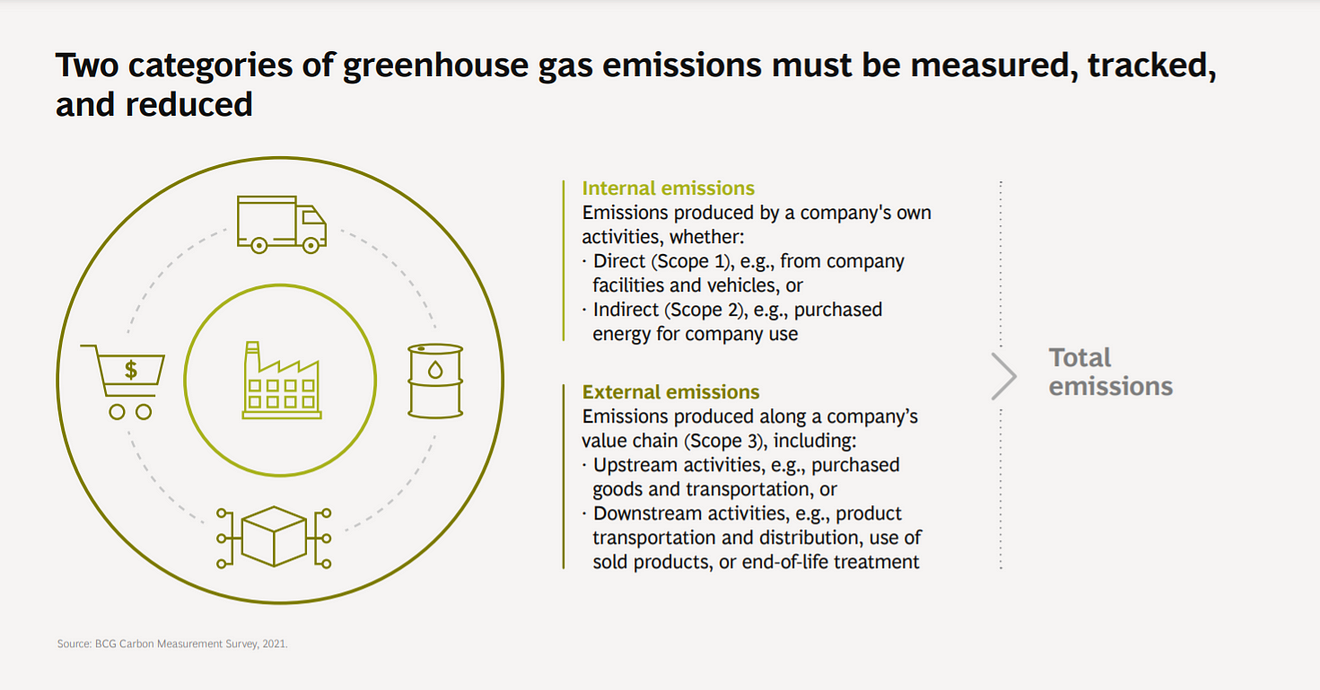

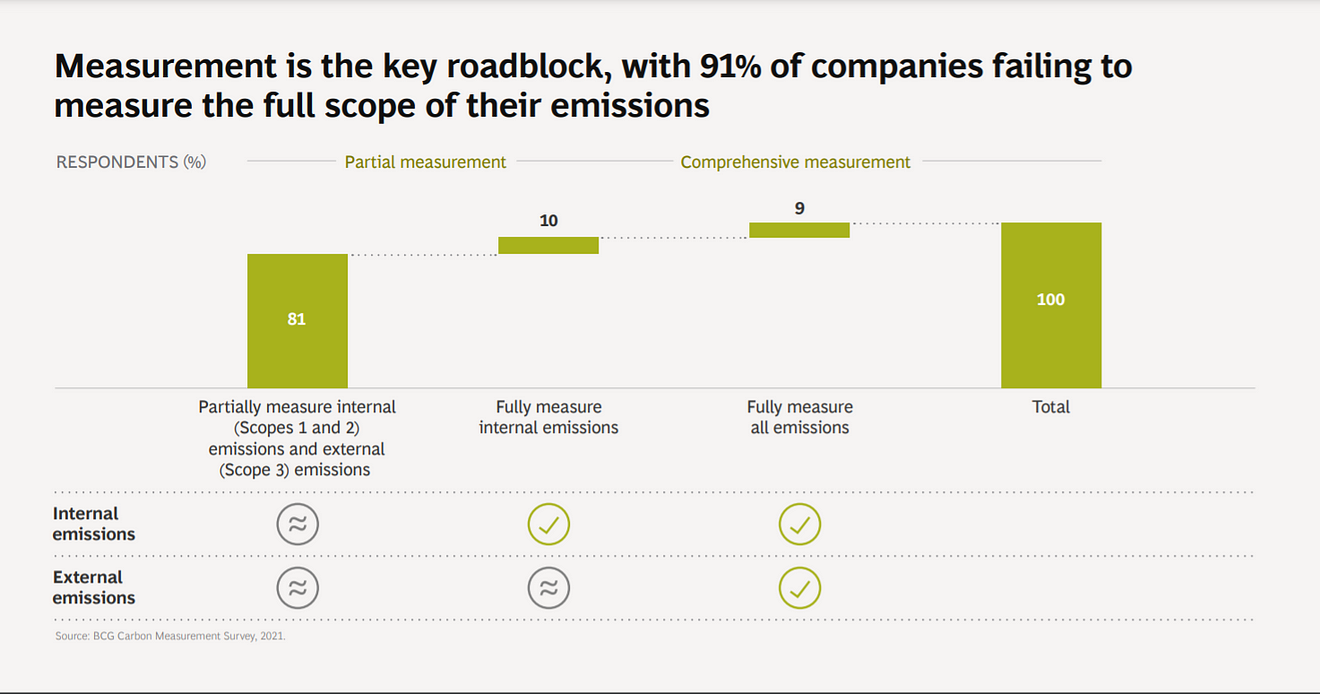

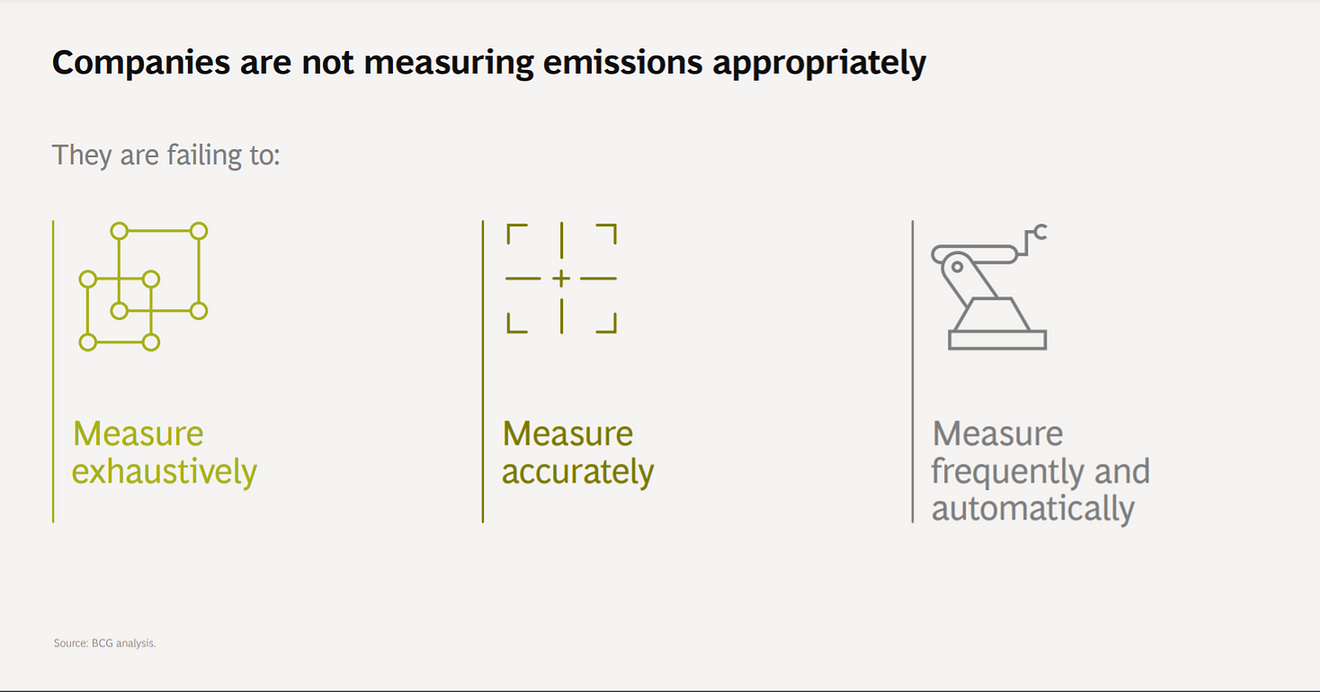
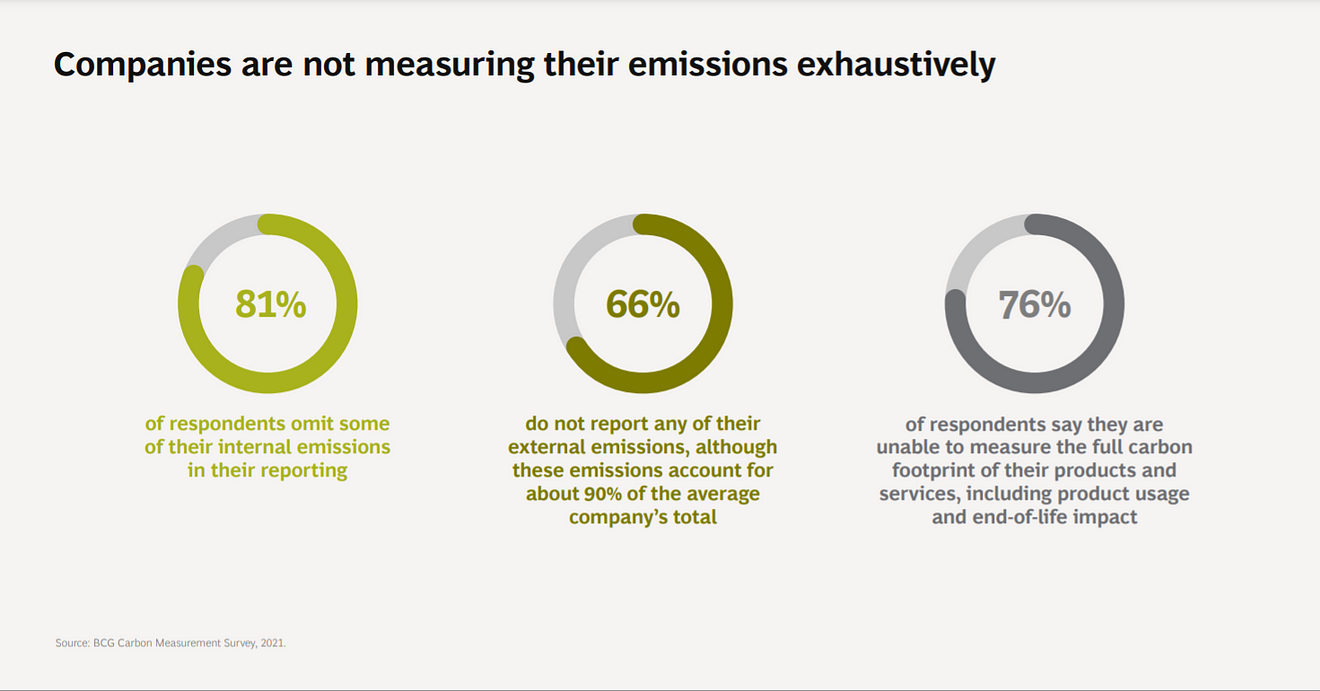

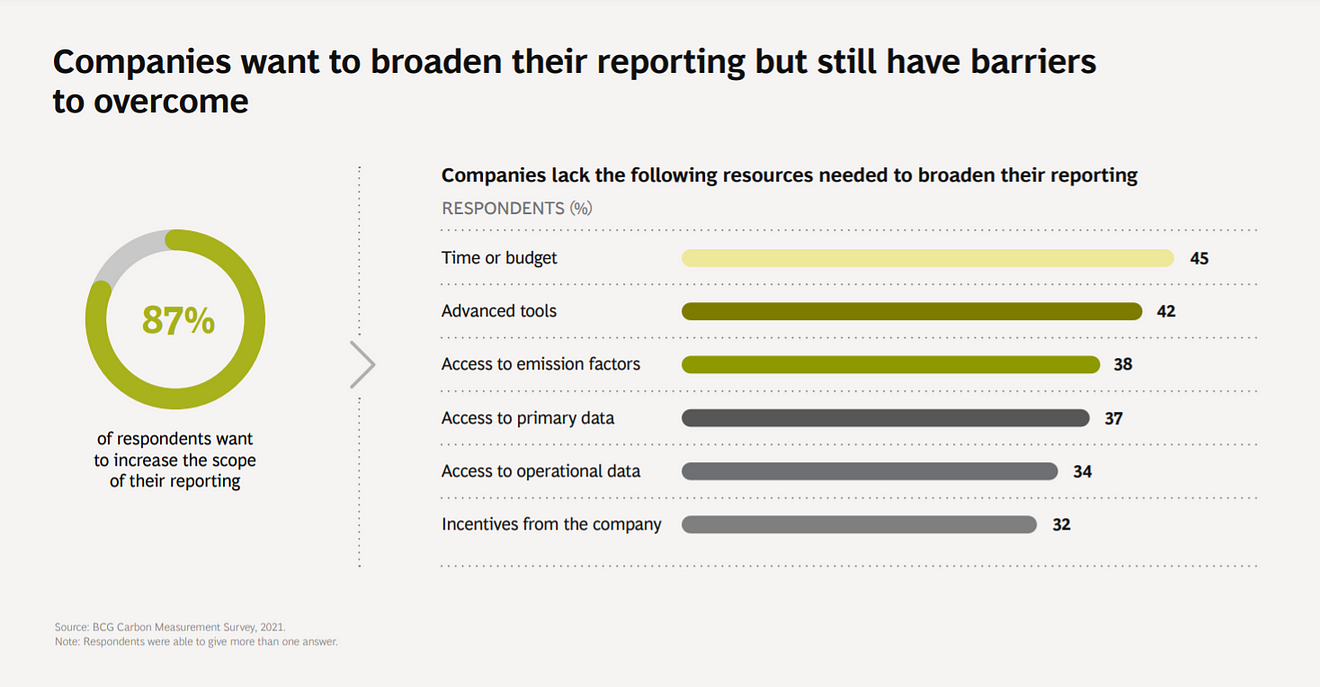
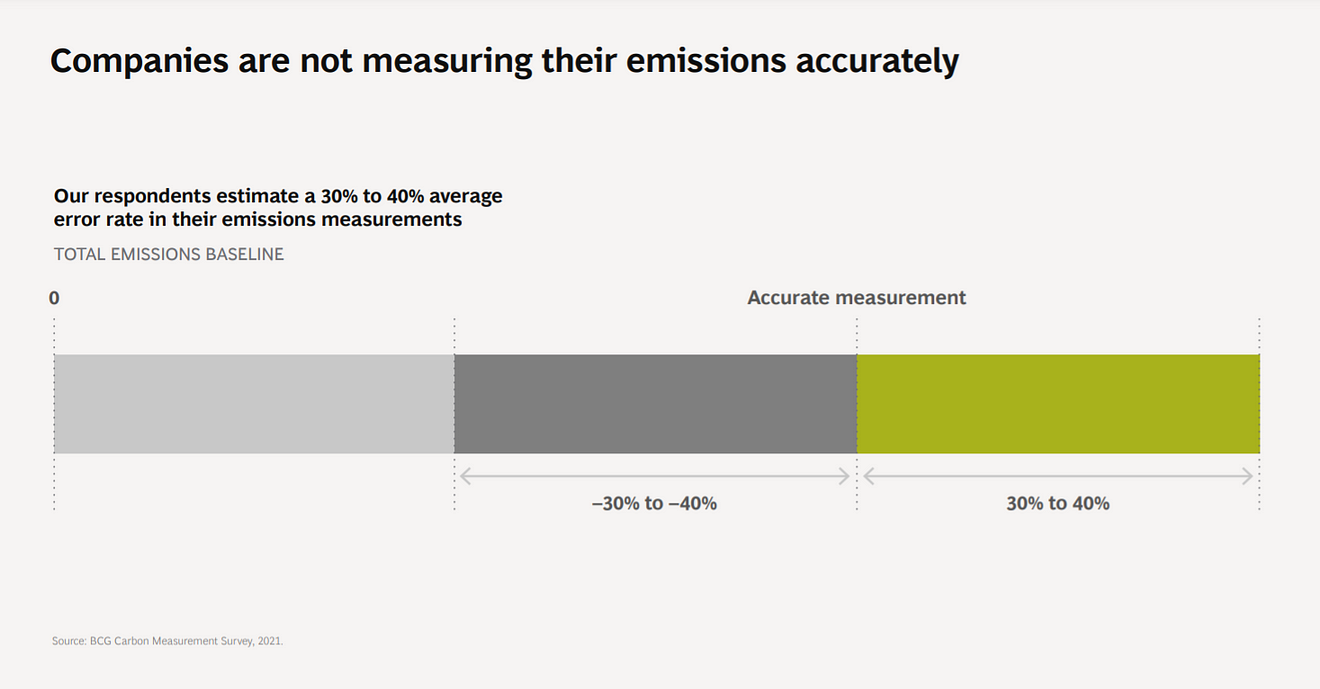
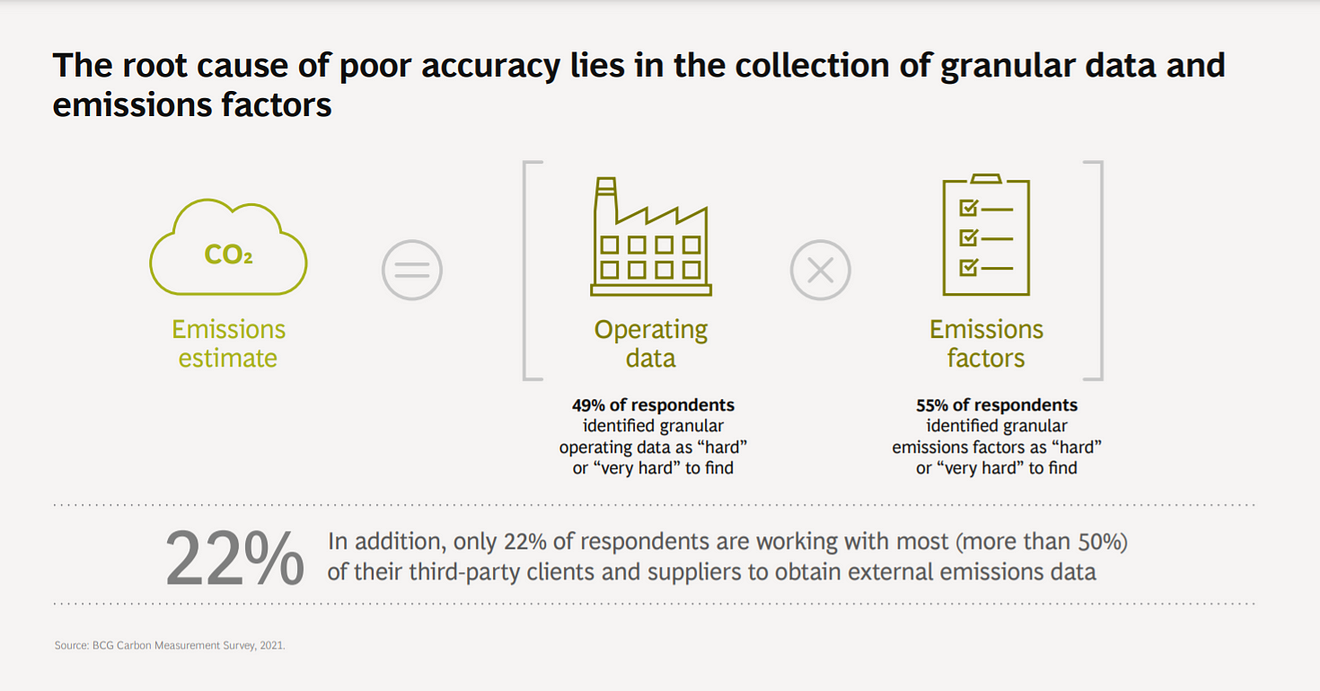
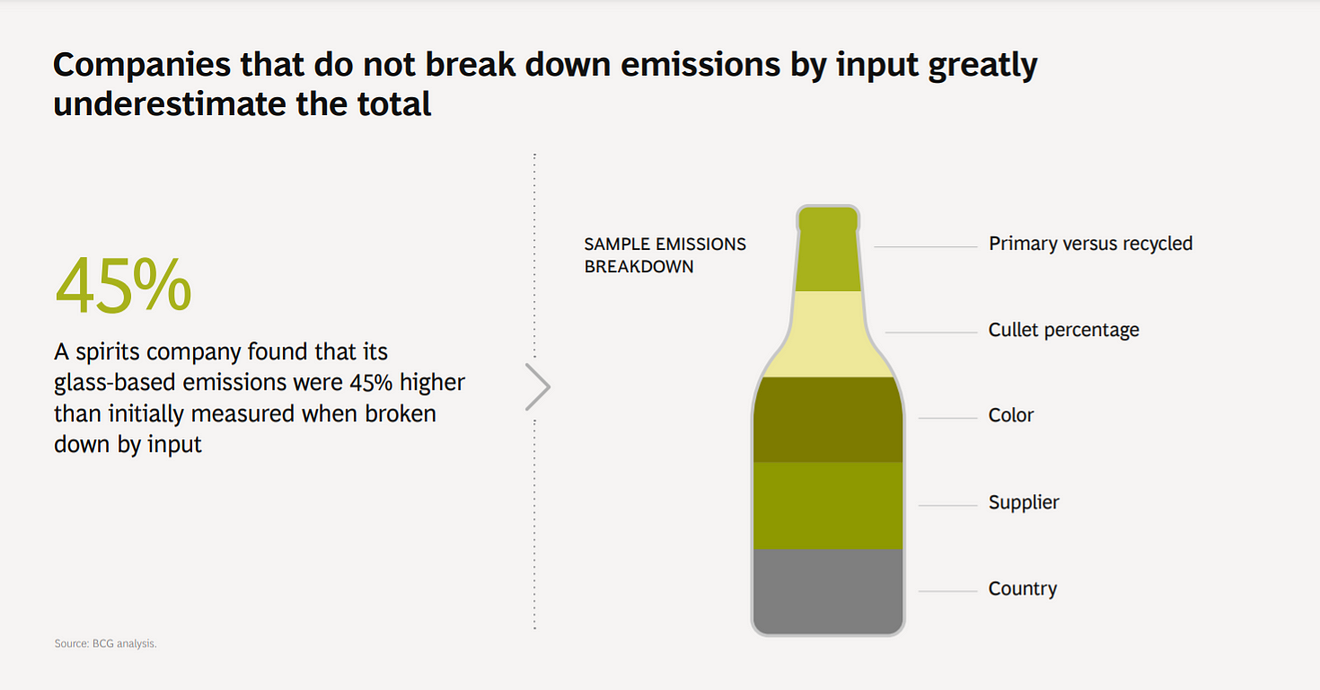
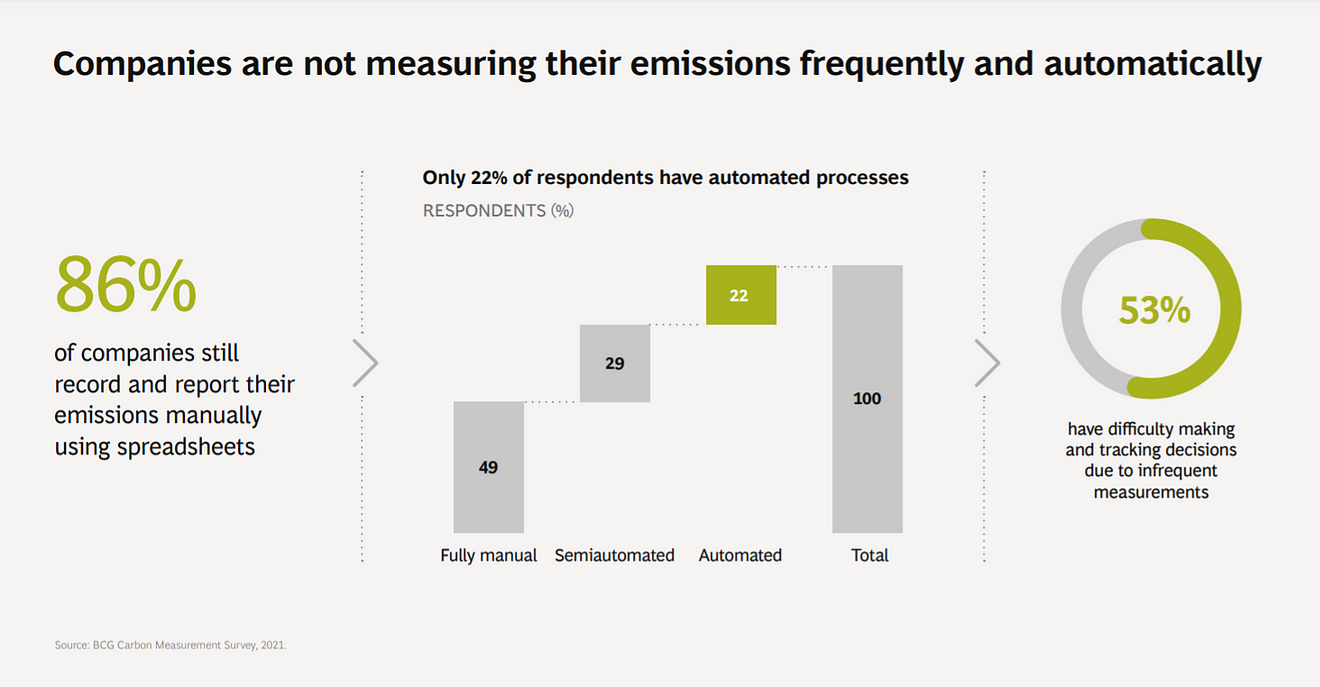
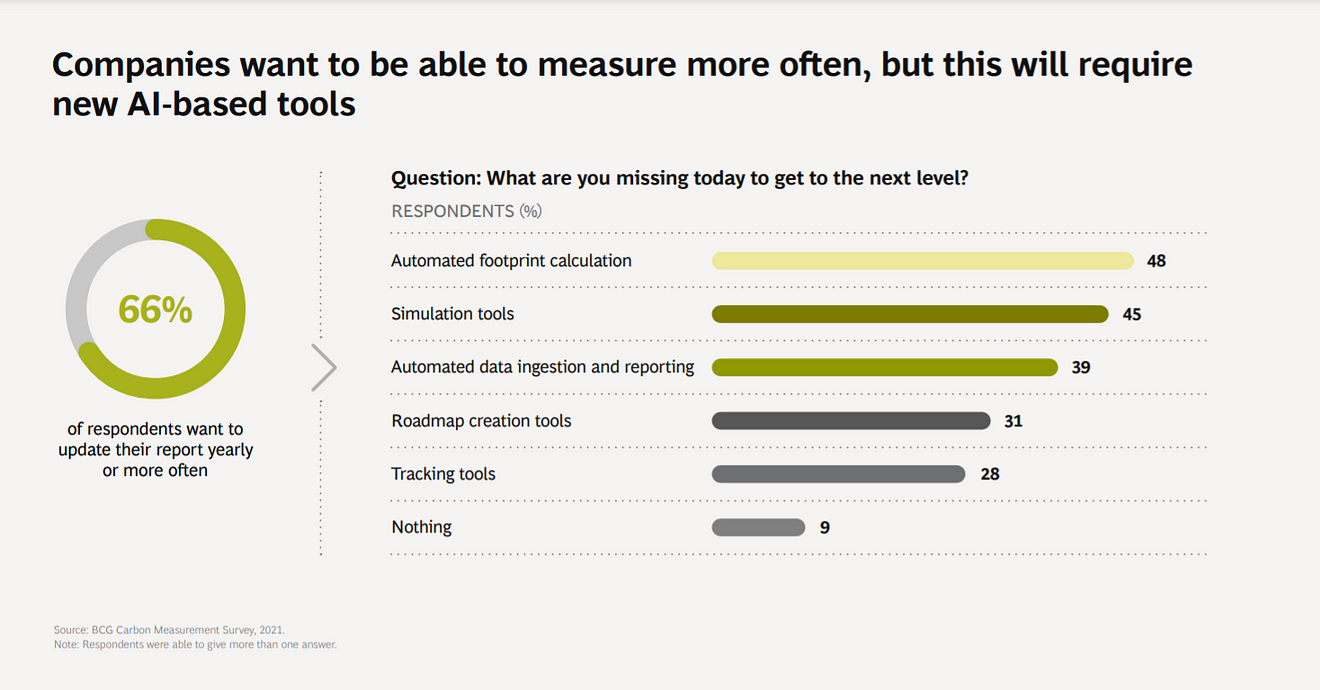
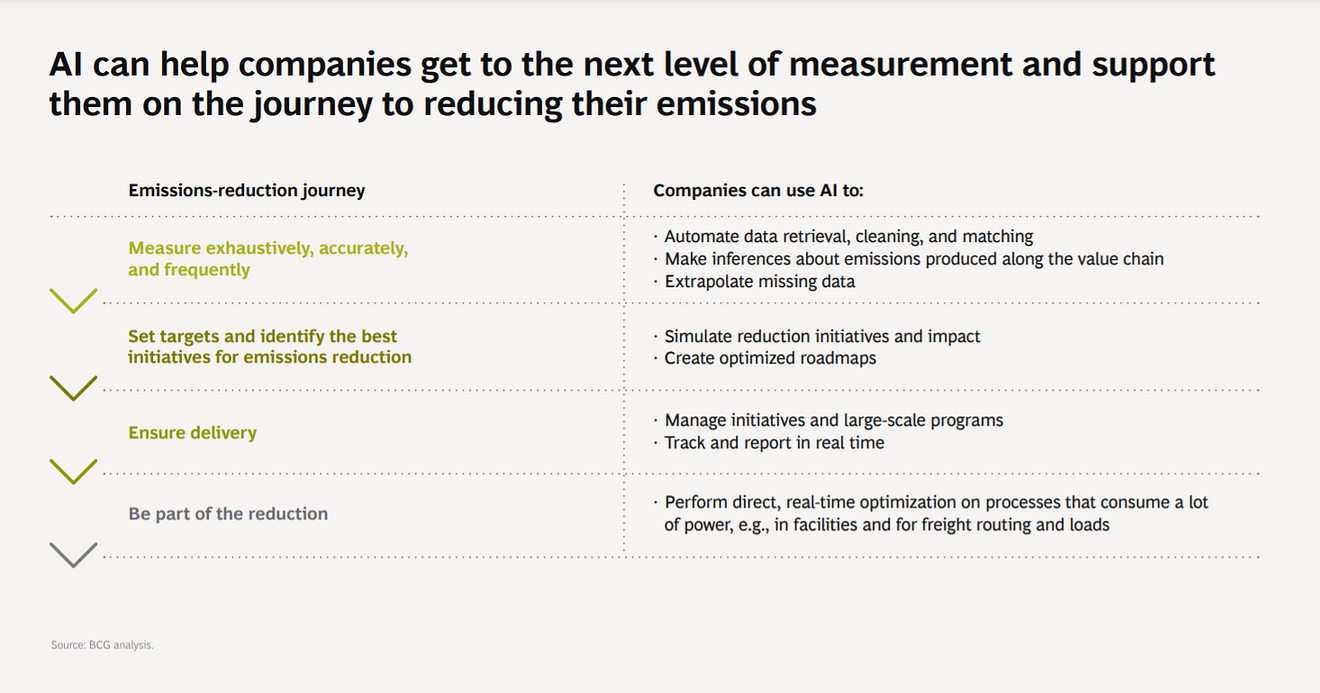


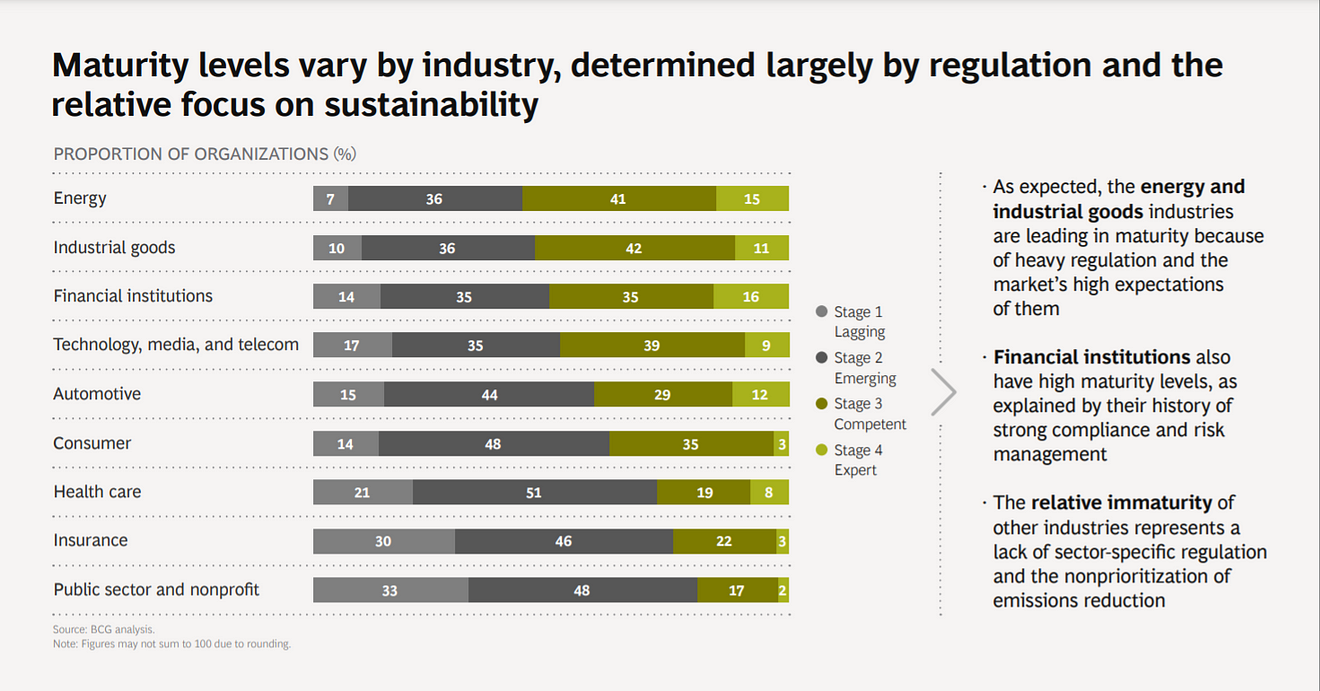
Featured Content:
The authors thank Tiphaine Ramanantsoa, Anouk Placet, François Candelon, Romain de Laubier, and Michel Frédeau for their contributions to this publication.
BCG GAMMA is BCG’s global team dedicated to applying artificial intelligence and advanced analytics to business at leading companies and organizations. The team includes 800-plus data scientists and engineers who apply AI and advanced analytics expertise (e.g., machine learning, deep learning, optimization, simulation, text and image analytics) to build solutions that transform business performance. BCG GAMMA’s approach builds value and competitive advantage at the intersection of data science, technology, people, business expertise, processes and ways of working. For more information, please visit our web page.
About Boston Consulting Group
Boston Consulting Group partners with leaders in business and society to tackle their most important challenges and capture their greatest opportunities. BCG was the pioneer in business strategy when it was founded in 1963. Today, we work closely with clients to embrace a transformational approach aimed at benefiting all stakeholders-empowering organizations to grow, build sustainable competitive advantage, and drive positive societal impact.
Our diverse, global teams bring deep industry and functional expertise and a range of perspectives that question the status quo and spark change. BCG delivers solutions through leading-edge management consulting, technology and design, and corporate and digital ventures. We work in a uniquely collaborative model across the firm and throughout all levels of the client organization, fueled by the goal of helping our clients thrive and enabling them to make the world a better place.
Our Methodology
BCG surveyed 1,290 organizations with 1,000 employees or more and revenues ranging from approximately $100 million to over $10 billion — across nine major industries worldwide — to find out how they were measuring and reducing their greenhouse gas emissions. Questions addressed two primary themes: the methodology, scope, and limitations of greenhouse gas measurement; and the targets for, as well as the progress and limitations on, reducing those emissions.
Emissions include those related to an organization’s activities (direct, or Scope 1, emissions), such as those produced by a company’s facilities or vehicles, or from energy purchased for the company’s use (indirect, or Scope 2, emissions). They are referred to as internal emissions.
Emissions also include those related to an organizations’ value chain (Scope 3), whether upstream, such as purchased goods, or downstream, such as the transportation and distribution of the company’s products or the use and end-of-life treatment of those products. They are referred to as external emissions.
Originally published at https://www.bcg.com on October 11, 2021.












